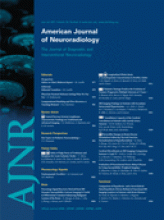Abstract
BACKGROUND AND PURPOSE: Practice patterns vary widely among centers with regard to the treatment of unruptured aneurysms. The purpose of the current study was to correlate outcome data with practice patterns, specifically the proportion of unruptured aneurysms treated with neurosurgical clipping versus endovascular coiling.
MATERIALS AND METHODS: Using the NIS, we evaluated outcomes of patients treated for unruptured aneurysms in the United States from 2001 to 2007. Hospitalizations for clipping or coiling of unruptured cerebral aneurysms were identified by cross-matching ICD codes for diagnosis of unruptured aneurysm with procedure codes for clipping or coiling of cerebral aneurysms. Mortality and morbidity, measured as “discharge to long-term facility,” were evaluated in relation to the fraction of cases treated with coils versus clipping as well as the annual number of unruptured aneurysms treated by individual hospitals and individual physicians.
RESULTS: Markedly lower morbidity (P < .0001) and mortality (P = .0015) were noted in centers that coiled a higher percentage of aneurysms compared with the proportion of aneurysms clipped. Multivariate analysis showed that greater annual numbers of aneurysms treated by individual practitioners were significantly related to decreased morbidity (OR = 0.98, P < .0001), while the association between morbidity and the annual number of aneurysms treated by hospitals was not significant (OR = 1.00, P = .89).
CONCLUSIONS: Centers that treated a higher percentage of unruptured aneurysms with coiling compared with clipping achieved markedly lower rates of morbidity and mortality. Our results also confirm that treatment by high-volume practitioners is associated with decreased morbidity.
Abbreviations
- HCUP
- Healthcare Cost and Utilization Project
- ICD-9-CM
- International Classification of Diseases, 9thRevision, Clinical Modification
- NIS
- National Inpatient Sample
- OR
- odds ratio
- Copyright © American Society of Neuroradiology







